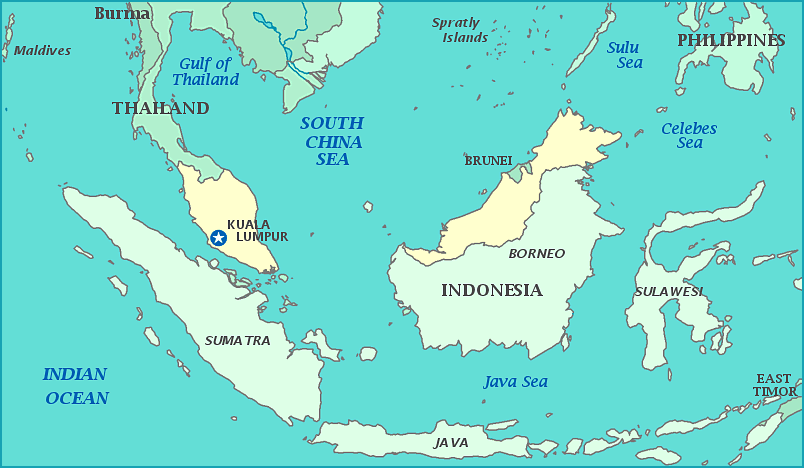The relations between Taiwan and China are at their lowest in recent times. The reason behind this conflict is the difference in the policies of the two countries. While China considers Taiwan it’s an integral part, Taiwan maintains its status as a sovereign nation.
Introduction to The Conflict
Taiwan is a small island nation on the southern coast of China. Taiwan is officially known as the Republic of China and has been governed independently from the people’s republic of china or Mainland China since 1949.
However, Mainland China or PRC considers the island country Taiwan as its province under the one china policy. At the same time, Taiwan opposes the one China policy and maintains its profile as an independent nation. Another reason for the conflict is that China is not a democracy, while the government in Taiwan is a democratically elected one; thus, the conflict of ideologies arises.
History Of Taiwan And China Conflict
When we look at the history of the conflict between Taiwan and China, we need to understand all the aspects. Thus, it is essential to know the history of Taiwan. According to the sources, the first inhabitants of Taiwanese Island were the people who are thought to be from the southern parts of China.
China sent an expeditionary force on the Taiwanese island in AD239, and this is when we see the island in the official records for the first time. This expedition is the reason Beijing gives for its claim on the island. Later the island was invaded by the Dutch; however, after a short period of Dutch rule, the Qing Dynasty from mainland China ruled the island from 1683 until 1895. The rule of the Qing dynasty is another reason that Beijing gives for its territorial claims on the Island Nation of Taiwan.
The island saw its first influx of inhabitants during the 17th century, as in this period, many peoples came to this island due to hardships and turmoil in mainland China. Most of these people who migrated to this island were from the Hokla Chinese or the Hakka Chinese originating in the Fujian and Guangdong of mainland china. At present, the descendants of these two migrant groups form the largest part of the Taiwanese population.
In 1895, Japan won in the sino-japan war, and the qing dynasty was forced to cede the island of Taiwan to Japan. However, after the end of the second world war, one of the victors, ‘The Republic of China,’ started ruling mainland china as well as the island of Taiwan. This was done under the leadership of Chiang Kai-shek with the consent of allies like America and the UK.
This rule of the republic of china did not remain for long as civil war broke out between the communists and the Chiang kai-shek government. The Chiang kai-shek armies were beaten by the communist armies under the leadership of mao Zedong in this war, and thus the Chiang kai-shek fled to the island of Taiwan with his supporters and remnants of his KMT government.
This group of the KMT, after fleeing to Taiwan, was referred to as the mainland Chinese by the locals. This group dominated Taiwan’s politics for many years, even though it comprised only 14% of the total Taiwanese population.
In the later years of this group, the demand for democracy gained popularity, and the rising pressure from other parties like the USA forced Chiang Ching Kuo the son of Chiang to allow the start of the democratic process. Thus an election was held in 2000, and a democratically elected president Chen Shui-bian came to power who was the first non-KMT president.
Present Situation Of Taiwan And China Conflict
In the 1980s, the relations between Taiwan and China started improving after decades of angry rhetorics and intention against each other. To further improve the relations, Beijing offered a solution to the problem in the form of ‘one country, two systems.’ Under this new policy of Beijing, Taiwan was to be given notable autonomy, in a case where Taiwan accepted the offer of unification with mainland China.
The system of ‘one country, two systems’ was first implemented in Hong Kong by Beijing in a bid to lure the people of Taiwan. However, in recent years, Beijing’s actions have put the policy of ‘one country, two systems’ under question. Some experts are even questioning the system, whether it even exists.
Although the offer of this system was rejected by Taiwan’s government, Taipei relaxed the visit rules and the rules for investments in and from mainland China. In 1991, Taiwan also proclaimed that the war, which was officially not over, was now over with mainland China.
At a point, there were also bilateral talks between the unofficial representatives of the two countries. However, Beijing’s reluctance to not accept Taiwan’s government as a legitimate one prevented the official government to government talks.
In later years, when president Chen Shui Bian was elected as president of Taiwan, it alarmed Beijing as the new president was a supporter of mainland China’s independence. Later in the 2004 elections, Mr. Chen was re-elected as the president of Taiwan. This re-election led Beijing to pass a new law in 2005 which was called ‘Anti-Secession Law’.
Under this new law of mainland China, Beijing has the power to use ‘non-peaceful means’ like military force against Taiwan if it tries to secede away from mainland china.
However, in the 2008 election of Taiwan, Ma Ying-Jeou was elected as the new president of Taiwan’s island nation. He was known to be lenient towards mainland china and thus sought to improve relations with Beijing through economic agreements. But, in the 2016 elections, Tsai Ing-Wen became president of Taiwan, which raised concerns in Beijing as she was a democracy supporter and demanded official independence from mainland China.
After her election as president, she spoke to the USA president over the phone, which was the break-in Taiwanese policy that cut relations with the USA since 1979. However, China stepped up its pressure on Taiwan through various means after her election as the president.
After 2018 Beijing has taken many steps like pressurizing international companies to list Taiwan as part of the People’s Republic of China. If a company failed to comply with Beijing’s order, it was blocked from doing business in China. Later in the 2020 elections, Ms. Tsai won as a president a second time, drawing sharp criticism from mainland china.
By this time, Hong Kong has seen unrest for a long seven months. The protests in Hong Kong were opposing the increasing influence of Beijing in Hong Kong and demanding independence. This made the people of Taiwan lean towards independence and drift away from mainland China even more.
The crackdown on the people in Hong Kong and Beijing’s policies had many in Taiwan worried that Taiwan is Beijing’s next target and thus further drifting Taiwan away from mainland China.
During this period, the USA has intensified its outreach to the Taiwanese Nation in a bid to counter the increasing assertiveness of China in the region. The USA reassured Taiwan of its support in case of any conflict and sent some of the highest-ranking officials for a meeting with Taipei. This visit from high ranking US officials was the first in decades and angered Beijing even more.
This visit from the US officials drew sharp criticism from China, and it even conducted a live-fire exercise in the Taiwan strait to show its military might.
So, What is Taiwan In The Current Scenario?
There is confusion when answering this question. Although Taiwan has all the qualities which a sovereign nation has, it has a military comprising 300,000 personals and a democratically elected government. The ROC also held the seat at the UN as the official representative of the whole of China. However, in 19711, it all changed, and the ROC was ousted from the UN, and PRC was elected as the official representative of the whole of China in the UN.
When it comes to recognition, only a small number of nations recognize Taiwan as an independent nation. The number of these nations is around 15, which is very low in context to Mainland China.
Role of the USA in Taiwan And China Conflict
The USA is one of the strongest allies and friends of Taiwan. The relation between the two nations forged during the cold war and the second world war. However, it went downwards when the US president Jimmy Carter to improve the ties with Beijing ended the recognition of Taiwan as a sovereign nation.
Although in response to this move by Jimmy, they drew criticism from US congress, and it passed a new act called the ‘Taiwan Relations Act.’ Under this new act, the USA promised Taiwan to supply defensive weapons and stressed that any attack on the nation of Taiwan by China would be a ‘grave concern’ for America.
Since the passing of this act and ending of official recognition by the US have been seen as a ‘strategic ambiguity’ to balance the power in Asia. The pivotal role of America was clearly shown to the world and China in 1996 when to influence the elections in Taiwan; China conducted provocative missile tests. In response to these tests by Beijing, US president Bill Clinton ordered the display of American Military power in Asia for the first time since the Vietnam war.
After this, the USA has been regularly sending ships into the Taiwan strait to support Taiwan while sending a clear message to Beijing.























